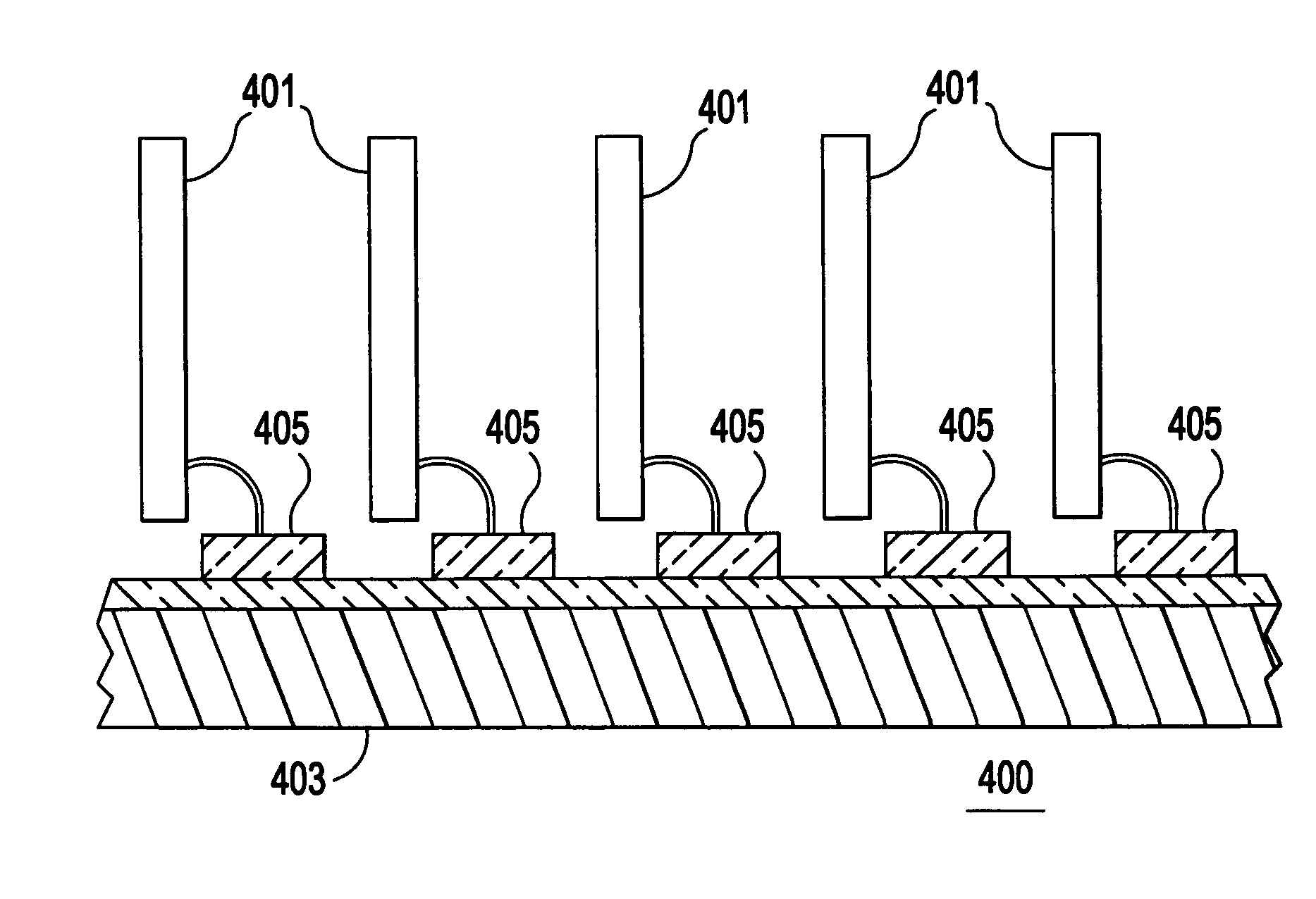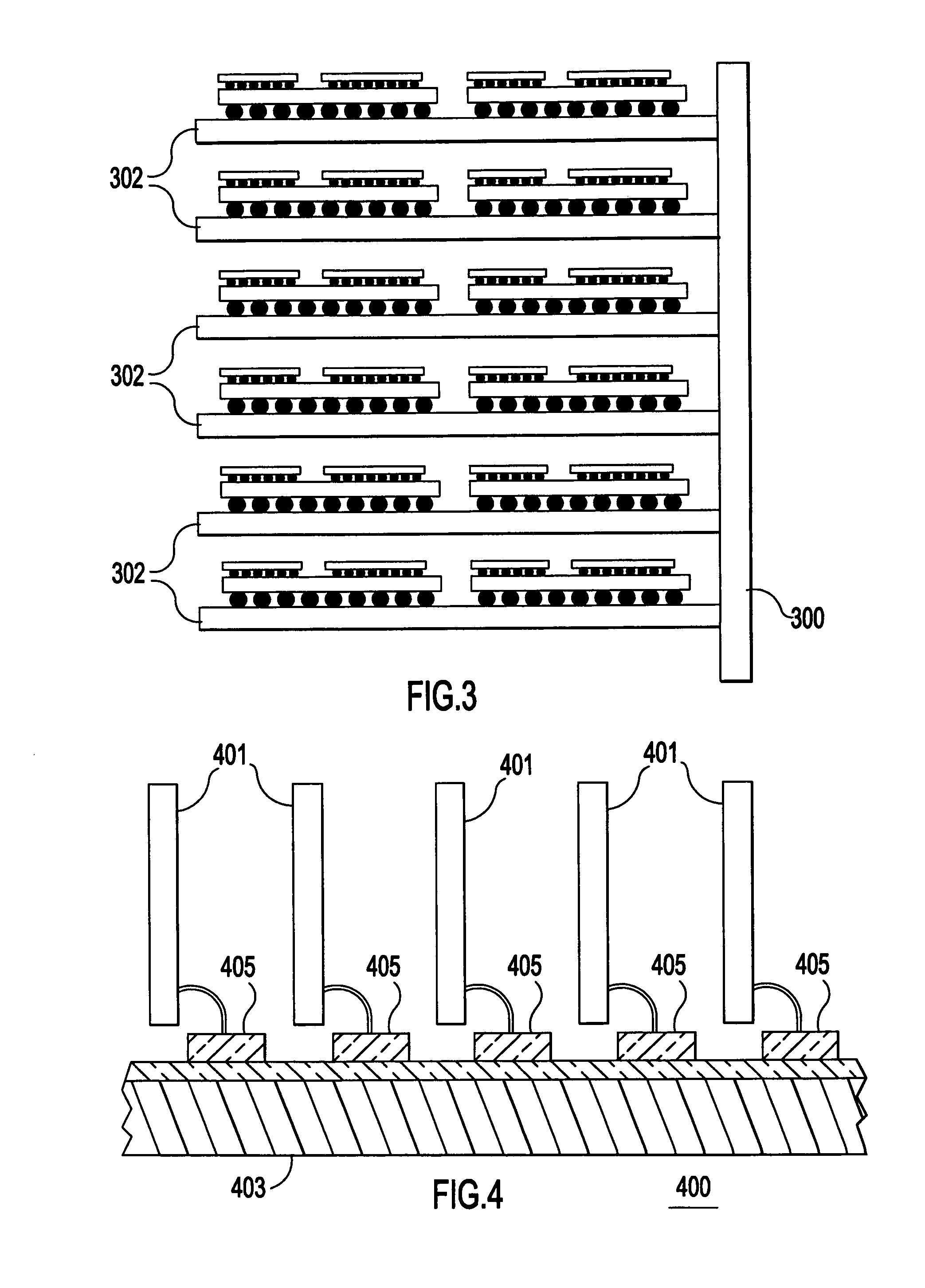Backplane assembly with board to board optical interconnections
a backplane assembly and optical interconnection technology, applied in the direction of optical elements, electrical apparatus construction details, instruments, etc., can solve the problems of dramatic cost increases, unacceptable power requirements, signal loss at each tap point, etc., and achieve the effect of improving board to board communication
- Summary
- Abstract
- Description
- Claims
- Application Information
AI Technical Summary
Benefits of technology
Problems solved by technology
Method used
Image
Examples
embodiment 900
[0052]FIG. 9A shows an example of an alternative embodiment grating structure 900 with like elements labeled identically. In this embodiment 900, the lasers 703, 705 are in the center of the chip 901 and a pair of identical photodiodes 902, 904 and gratings 906, 908 are located on either side of the lasers 703, 705. The two photodiodes 902, 904 are wired together (not shown) to act as a single photodiode. The advantage of this embodiment is that the photodiodes 902, 904 can sense light in the channel that was transmitted by this same chip, which may be used in testing.
[0053]Furthermore, this embodiment 900 lends itself to a simple optical continuity check 920 in FIG. 9B when the board it is inserted into the backplane, i.e., during a board self-test sequence. During the self test, the channels are held open in step 922 by other connected boards, i.e., no other boards have access to the optical bus as described in further detail hereinbelow. Then, each transceiver 900 on the board, t...
embodiment 1500
[0062]FIG. 15 shows an example of an alternate embodiment 1500 wherein a transceiver pair 1502, 1504 are mounted side by side on the backplane 1506 rather than stacked. In this embodiment, only the repeater chip 1504 is mounted in a flange 1508, where it couples to a plug (not shown). The backplane chip 1502, which couples to backplane wave guides, is joined to the backplane 1506 outside the socket 1508. The two transceivers 1502, 1504 are connected through backplane wiring 1510 at a sufficiently short distance to accommodate the desired speed.
embodiment 1600
[0063]FIG. 16 shows another example of an alternate embodiment 1600 wherein optical signals are contained within each board 1602, 1604. In this embodiment, electrical board signals in backplane wiring 1606 only travel a very short distance to the electro-optical transceiver 1608.
PUM
 Login to View More
Login to View More Abstract
Description
Claims
Application Information
 Login to View More
Login to View More - R&D
- Intellectual Property
- Life Sciences
- Materials
- Tech Scout
- Unparalleled Data Quality
- Higher Quality Content
- 60% Fewer Hallucinations
Browse by: Latest US Patents, China's latest patents, Technical Efficacy Thesaurus, Application Domain, Technology Topic, Popular Technical Reports.
© 2025 PatSnap. All rights reserved.Legal|Privacy policy|Modern Slavery Act Transparency Statement|Sitemap|About US| Contact US: help@patsnap.com



